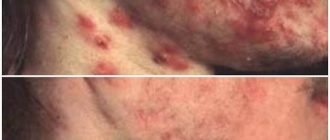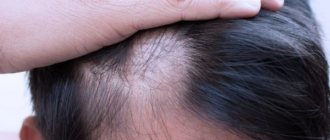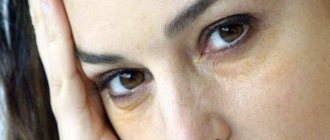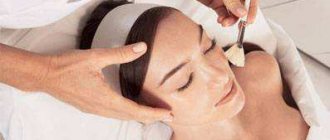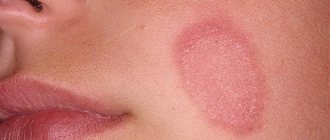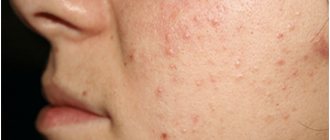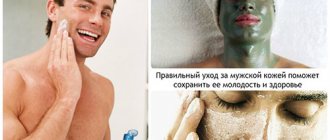As you know, the autumn and spring periods are dangerous in terms of colds and diseases. These periods are especially dangerous for people with chronic diseases. This is due to the fact that these seasons account for the largest share of exacerbations: reactivation processes affect various viruses and infections.
A relapse of herpes zoster is no exception, because it is in the spring or autumn that herpes zoster, previously in a latent state, can awaken and cause a lot of inconvenience to the carrier . The symptoms of the disease are characterized by particular brightness and pain. Herpes zoster and its exacerbations are a disease that affects both men and women. The most common manifestation of the virus, according to medical statistics, is observed in older people after 45-55 years of age. The deteriorating environmental situation adversely affects the general condition of the immune system, which is a prerequisite for the activation of the herpes virus.
Let's consider the symptoms observed in carriers when they were attacked by herpes zoster.
Causes of herpes zoster and factors that increase the risk of the disease
The cause of shingles is infection with the herpes virus type III or chickenpox. Initially, herpes pathogens that enter the body cause chickenpox. Chickenpox most often affects children under 5 years of age. After some time, with a strong decrease in immunity, shingles occurs. That is, you cannot get shingles if you have not had chickenpox.
The insidiousness of the virus is that even after acute symptoms are relieved, viral particles are present in the nervous system. Therefore, a person infected with herpes remains a carrier for the rest of his life.
Viral DNA is located in nerve endings near the spinal cord. It is impossible to remove herpes without damaging the cell.
High immune defense blocks the activity and reproduction of the virus, preventing symptoms. Therefore, the incubation period for infection with herpes zoster can last from several weeks to several years.
It turns out that the disease does not come from outside, but from the person’s body itself. The main reason is a decrease in immunity as a result of such conditions:
- long-term use of medications that suppress the immune system - corticosteroids, immunosuppressants;
- physical and emotional stress;
- neoplasms;
- undergoing radiation therapy;
- hypothermia;
- HIV infection.
Shingles is highly contagious (infectious). Viral particles are contained in the contents of the vesicles, therefore, when in contact with a patient, it is easy to become infected. A person is dangerous from the moment the vesicles appear until the crust falls off.
Not all people who have had chickenpox will necessarily develop herpes zoster. As a rule, the virus recurs only with a strong decrease in immunity, which may not happen in a lifetime.
Causes
What it is? So, shingles is essentially herpes. Just not the one we all usually call a cold. Everything is much more serious here. We are talking about Varicella zoster. He is familiar to many due to an active childhood disease - chickenpox.
A person who has had chickenpox becomes a carrier of the virus, which remains in an inactive form for a long time. The virus is usually localized in nerve tissues. According to doctors, the virus becomes active, most often due to weakened immunity, frequent stress and nervous strain.
The development of herpes zoster in adults can be triggered by:
- severe stress, exhausting work;
- taking medications that reduce the body's defenses;
- various malignant tumors, lymphogranulomatosis and non-Hodgkin lymphomas;
- influence of radiation therapy;
- bone marrow and organ transplantation;
- HIV infection is in the stage of transition to AIDS.
Weakened immunity is the reason why this disease most often appears in older adults and in those who have recently undergone hormonal, radiation or chemotherapy.
What does herpes zoster look like on the body?
Shingles on the face and neck of a person first appears in the form of individual pink spots with an uneven edge, characterized by increased sensitivity. The average diameter of such rashes is from 3 to 5 cm. After a day, bubbles - vesicles - appear on the surface of the spot.
The main difference between herpes zoster and other dermatological diseases is the clear boundaries of the rash.
Most often, vesicles appear on the chest, neck or face; they typically involve one side, shoulder blade and shoulder. Localization is almost always one-sided and coincides with the course of the nerve. Skin manifestations disappear within 21-30 days, and neuralgic (soreness) can persist for up to six months.
Symptoms of herpes zoster
The clinical picture of herpes zoster is very specific:
- gradually spreading pinkish spots on the skin;
- redness and itching along the nerve;
- damage to peripheral nerve endings (trigeminal or intercostal neuralgia);
- pain at the site of bubble formation;
- after 72 hours, groups of vesicles form on the spot, the pain intensifies, and the lymph nodes near the lesion may become enlarged;
- after a week, the rashes dry out and a hard crust forms;
- the pain persists after the rash disappears.
Typical course
The standard clinical picture of herpes zoster consists of skin lesions and a neurological disorder - severe pain. The progression of the disease is accompanied by standard symptoms of a viral infection:
- increase in body temperature;
- general malaise.
About 80% of patients at the initial stage complain of severe pain, burning and itching in the area where vesicles subsequently appear. 2-3 days after the onset of initial symptoms, papules form - small compactions, slightly raised above the surface of the skin. In 24-48 hours they turn into vesicles - bubbles filled with liquid. New vesicles continue to form over the next 3–4 days. The blisters often merge to form a single, painful formation.
If new vesicles continue to appear after 7 days, this indicates a serious lack of protective forces.
The rash is usually noticeable on the body or neck. A small percentage of patients have Ramsay-Hunt syndrome (damage to the external auditory canal, accompanied by paralysis of the facial nerve) or ophthalmic form of lichen (damage to the mucous membrane of the eyes).
On days 5-6, the vesicles with liquid turn into crusts, which fall off on their own after 2-3 weeks. At the site of shingles, redness (or paleness) of the skin, as well as peeling, is observed for a long time.
Severe pain reduces a person’s motor activity. In 20% of patients, neurological manifestations persist after the crusts fall off for several months and sometimes years. Therefore, therapy for shingles is aimed at eliminating the vesicles and reducing pain.
Atypical forms
In addition to the typical one, there are atypical forms of the disease.
Abortive
This type of shingles goes away with virtually no rash. Slight redness and isolated lumps appear. The pain is not pronounced. Sometimes there may be a slight tingling or itching sensation.
Bullous
It is characterized by the fact that in addition to the basic signs of herpes zoster, drainage vesicles appear - large cavity vesicles containing liquid. Such formations are localized in areas with a “loose” subcutaneous layer (lips and genitals).
Bullae are accompanied by swelling and redness. Therefore, the bubbles themselves become less noticeable.
Hemorrhagic
Hemorrhagic herpes zoster on the arm, neck or body is diagnosed in isolated cases and differs from the typical form of the disease only in the bloody contents of the vesicles. The crusts that appear in place of the bubbles are dark brown, not yellow. Some patients complain of pain in the affected areas of the skin.
Gangrenous
Develops against the background of decreased immune defense. Characterized by a large number of blisters with bloody contents. Ulcers remain in place of the burst vesicles. They merge, forming large affected areas. The tissues die, leaving noticeable scars. Often accompanied by symptoms of intoxication.
Generalized
This form is characterized by large lesions. The rash consists of blisters with liquid contents typical of herpes against a background of redness of the skin. There may be blood present inside the vesicles. When they burst, painful erosions form, and ulcers form on the mucous membranes of the mouth and genitals. Differs in longer formation of vesicles.
In clinical generalized herpes zoster, damage to the mucous membranes of the eyes and brain is observed. In such a situation, encephalitis, serous meningitis and meningoencephalitis are diagnosed, accompanied by general intoxication.
In the generalized form, hospital treatment is required. Otherwise, death is possible.
Possible complications and consequences
Complications from herpes zoster are rare. These include:
- encephalitis that develops a few days after the onset of the rash;
- myelitis (damage to the gray and white matter of the spinal cord), which can develop approximately half a month after the rash and is expressed in limited loss of sensitivity, and sometimes in half or complete (in severe cases) transverse damage to the spinal cord;
- paralysis of the oculomotor muscles - occurs after 1.5 months, and sometimes after six months from the onset of the disease;
- unilateral, but more often bilateral, rapidly progressing necrosis of the retina, which occurs after weeks and sometimes months;
- paresis of the muscles of the limbs when the lesion is localized in this area.
The most common consequences of the disease are postherpetic itching and pain syndrome (neuralgia), which sometimes occur together. Postherpetic neuralgia occurs in 10-20% of cases. It causes significant suffering to patients and can last more than 4 months, even years. There are three types of this pain:
- in 90% - occurs with a superficial light touch;
- dull pressing or burning sensation, constant and deep;
- periodic spontaneous stabbing nature or in the form of an “electric shock”.
Herpes zoster poses a significant danger during pregnancy, since the pathogen is able to penetrate the placenta and affect the nervous system of the fetus. This leads to congenital deformities or death. The disease, which occurs in the first trimester, usually leads to placental insufficiency and spontaneous abortion. In the third trimester, such complications occur less frequently, but they are not completely excluded.
How to diagnose herpes zoster in adults and children
Diagnosis of herpes zoster includes:
- collecting anamnesis: patient complaints, features of the course of the disease, initial medical examination;
- laboratory research.
Clinical tests can confirm the diagnosis. For this use:
- A serological blood test to detect herpes DNA and proteins produced by the immune system in response to the virus.
- PCR (polymerase chain reaction) - detection of elements of the herpes genome in the blood and affected skin tissues.
How to treat shingles
With high immunity, the body copes with herpes infection on its own. However, adequate treatment of herpes zoster speeds up recovery and prevents complications. The therapy blocks the activity of the pathogen, reduces pain and prevents severe forms of the disease.
Antiviral drugs
The basis of the virus is the protein that forms the envelope and the nucleic acid that preserves its genetic characteristics. Nucleases that destroy viral DNA without damaging skin cells help block its spread. Therefore, in the first week of illness, intramuscular injections of Deoxyribonuclease are prescribed twice a day.
If vesicles are on the mucous membrane of the mouth or eyes, the drug solution is applied topically.
The use of Deoxyribonuclease can quickly cure shingles and reduce pain.
Other drugs:
- Isoprinosine is an antiviral and immunomodulatory agent. Reduces the symptoms of viral infection, accelerates the restoration of damaged skin and improves immune defense. Take the drug orally at 50 mg (per kg of body weight) per day for five days. In severe cases of the disease, the duration of treatment can be increased to 10-15 days.
- Acyclovir and Valaciclovir are prescribed to block the spread of herpes. Take up to 4 g of the drug per day, which is divided into 5 doses. The effectiveness of treatment depends on its timeliness. Duration – from 7 to 10 days.
- Acyclovir is also used topically as an ointment. It is used to treat the affected skin up to 6 times a day until crusts appear. The maximum duration of treatment is 10 days.
Additionally, interferon solution or antiviral ointments are prescribed for local use:
- Helepin;
- Alpizarin;
- Florenal.
Painkillers
Herpes zoster on the face and body is accompanied by severe pain. To eliminate it, Gangleron or Carbamazepine is prescribed. Gangleron is prescribed in the form of intramuscular injections of 1 ml daily for 12-15 days or 1 capsule twice a day for 2 weeks. Carbamazepine is administered orally at 0.1-0.6 g per day, divided into 3 doses. After eliminating the pain, the dose of the drug is gradually reduced.
A course of reflexology, including 6 to 10 sessions, can help cope with pain.
Vitamin preparations
To strengthen the immune system, multivitamin complexes are indicated, which include cyanocobalamin (vitamin B12):
- Doppel herz aktiv;
- VitaVit Energy;
- Pikovit et al.
Other groups of drugs
After eliminating the skin rashes, therapy with analgesics is continued until the pain disappears and the functioning of the nervous system is restored.
To reduce pain the following is prescribed:
- Pentalgin;
- Baralgin;
- Nimesil;
- Ketanov;
- Flogoxib.
The dosage, dosage regimen and duration of treatment will be prescribed by a neurologist. Self-medication of neurological symptoms can be dangerous.
Severe itching is relieved with 1 tablet of an antihistamine per day (Loratadine, Zyrtec).
For erosive and ulcerative skin lesions, use ointment with the antibiotic Levomekol and the wound-healing agent Solcoseryl.
Recommendations
It is worth remembering a few useful tips that will help make it easier for a child or adult to cope with lumbar lichen. The recommendations are as follows:
- Do not scratch the affected skin, even if the itching is unbearable.
- To get rid of discomfort, you need to use wet cold compresses.
- Sores can be quickly dried using baking soda or cornstarch.
- Vesicles can be treated with aluminum subacetate (Burow's fluid). This will not only help remove crusts, but also effectively dry the affected skin.
- If suppuration occurs, you need to consult a doctor so that he can prescribe a cream or ointment containing an antibiotic.
- It is important to maintain hygiene measures. It is necessary to carefully care for your skin, not forgetting about individual medical recommendations.
By the way, many people are interested in whether it is possible to wash if you have shingles (lumbar)? Yes, but not often. The best option is a shower, after which you should not dry yourself with a towel. It is enough to lightly blot the skin.
Consequences of herpes zoster
Shingles affects not only the skin, but also the nervous system. Therefore, in the absence of adequate therapy, it causes complications:
- unilateral facial paralysis (on the side where the rash appears);
- ulcerative necrotic lesions as a consequence of herpes zoster can develop in women and men with HIV infection;
- prolonged neuralgia (pain) with minimal or no skin lesions;
- necrosis and scarring of tissue at the site of vesicle formation.
Treatment
Treatment of the consequences of herpes zoster is carried out in a hospital setting due to the high risk of developing complications incompatible with life.
Important!
The basis of treatment for complications of herpes zoster is effective pain relief along with etiotropic treatment.
Many patients are interested in how to treat the effects of herpes zoster in order to achieve long-term remission? The therapeutic block must necessarily include antiviral drugs and immunomodulation to suppress the replication of the herpes virus. Main areas of treatment:
- The use of systemic antiviral drugs to relieve complications (drugs of acyclovir, valacyclovir, ganciclovir).
- Pain relief, which is achieved by using non-steroidal anti-inflammatory drugs (diclofenac, paracetamol, ibuprofen), narcotic analgesics. There is a high effect when using a drug such as Amantadine. The drug has a pronounced analgesic and antiviral effect for complications of herpes zoster.
- Immunocorrection: interferon preparations (Viferon, Genferon), interferon inducers (Cycloferon, Amiksin, Kagocel, Isoprinosine), immunostimulants (Timalin, Myelopid, Polyoxidonium), interleukins (Roncoleukin), immunoglobulins.
- Agents that improve trophism and metabolism of nerve tissue (Mildronate, Piracetam).
- Vitamin therapy (B vitamins).
Complications require the use of symptomatic therapy: anticonvulsants, antiparkinsonian and other drugs. In severe cases, glucocorticoids are used to relieve tissue inflammation. Treatment is complemented by physiotherapy, local treatment of rashes, and diet.
The consequences of herpes zoster are serious diseases that require a systematic and comprehensive approach to diagnosis and treatment. The prognosis is largely determined by the age and immune status of the patient. Among elderly and weakened people, there is a tendency to develop severe forms of complications.
An effective means of preventing the consequences of herpes virus infection type 3 is vaccination. The chickenpox vaccine is given in childhood; it reliably protects the patient from complications of chickenpox and herpes zoster.
Prevention of herpes zoster
There is no special prevention for herpes infection. Taking antiviral and immunomodulatory drugs will help prevent the recurrence of herpes zoster. Other preventive measures include a healthy lifestyle, giving up bad habits and moderate exercise.
During an exacerbation, you should adhere to a special diet. It is recommended to consume at least 200 g of quickly digestible protein (broths, pates). A person should receive at least 2 thousand kcal per day. It is better to replace animal fats with vegetable fats.
Shingles is a highly contagious viral disease. It usually appears as a unilateral rash on the face, neck or body, accompanied by severe pain. Complex therapy is required, including antiviral, painkillers, detoxification and immunomodulatory agents.
